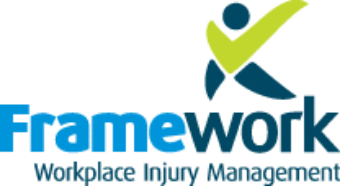Recently I’ve been reading Scott Barry Kaufman’s book, Transcend – the new science of self-actualisation. This book explains the evolution and utility of humanistic psychology, drawing heavily on the writings and teachings of Abraham Maslow, best known for Maslow’s hierarchy of needs (although he never actually drew a pyramid). Scott Barry Kaufman clarifies this fact and goes on to explain the integrated approach he believes Maslow articulated. It got me thinking of the psychological core stability for wellbeing.
I’ve been absorbing it through my lens of an aspirational humanist struggling daily with the rigidity, compliance and process that underpins our collective response to the problem of people being injured at work. The current approach shows little regard for the science of humanistic psychology described by the likes of Carl Rogers, Erich Fromm and Abraham Maslow and/or the positive psychology movement which emerged in the late 90s thanks largely to Australian psychologist Martin Seligman.
When I read Maslow’s critique…
“I criticize the classical Freudians for tending (in the extreme instance) to pathologize everything and for not seeing clearly enough the healthward possibilities in the human being,….” —Abraham Maslow, Toward a Psychology of Being (1962)[1]
….I think of the medical model focus on the individual illness at the expense of an organisational focus on a more integrated sense of wellbeing.
He explains his aim is to combine the “corpus of ideas” provided by the humanistic psychology era with…
“…the wealth of scientific findings that have accumulated since then on the higher reaches of human nature, including my own research on intelligence, creativity, personality, and well-being.”[2]
It seems to me that the processes being imposed upon anyone who has injured themselves in the course of their work remain informed by a combination of illness oriented interventions and, the now discredited, assumptions of behaviourism. The clumsy and oversimplified attempts at extrinsic motivation, by slowly tightening the financial noose, the demand for the worker to continually prove they’re unwell by telling their story to “independent” doctors, the incentivisation of health professionals (rehab providers) to penetrate the otherwise sacredly confidential patient-doctor relationship, reeks of behaviourism and appeals to the ignorant power the system grants to insurers and employers.
The alternative?
Within the humanistic psychology framework, the healthy personality is considered one that constantly moves toward freedom, responsibility, self-awareness, meaning, commitment, personal growth, maturity, integration, and change, rather than one that predominantly strives for status, achievement, or even happiness.[3]
How can we infuse workers’ compensation with the language (and enactment) of freedom, responsibility, meaning and self-awareness? How can we change the conversation from treatment goals and timeframes to healthy motivation and wellbeing?
Scott Barry Kaufman has provided a list of 13 potential sources of wellbeing
- Life satisfaction (a positive subjective evaluation of one’s life overall)
- Vitality (a positive subjective sense of physical health and energy)
- Environmental mastery (the ability to shape environments to suit one’s needs and desires; to feel in control of one’s life; to not feel overwhelmed by the demands and responsibilities of everyday life)
- Positive relationships (feeling loved, supported, and valued by others; having warm and trusting interpersonal relationships; being loving and generous to others)
- Self-acceptance (positive attitudes toward self; a sense of self-worth; liking and respecting oneself)
- Mastery (feelings of competence in accomplishing challenging tasks; a sense of effectiveness in accomplishing important goals one has set for oneself)
- Autonomy (feeling independent, free to make one’s own choices in life, and able to resist social pressures)
- Personal growth (continually seeking development and improvement, rather than seeking achievement of a fixed state)
- Engagement in life (being absorbed, interested, and involved in one’s daily activities and life)
- Purpose and meaning in life (a sense that one’s life matters, is valuable, and is worth living; a clear sense of direction and meaning in one’s efforts; a connection to something greater than oneself)
- Transcendent experiences (experiences of awe, flow, inspiration, and gratitude in daily life)
- More positive emotions (higher frequency and intensity of positive moods and emotions, such as contentment, laughter, and joy, in one’s daily life)
- Fewer negative emotions (lower frequency and intensity of negative moods and emotions, such as sadness, anxiety, fear, and anger, in one’s daily life)
Undermining wellbeing
When you scan this list it’s easy to see how the worker’s compensation system actually undermines wellbeing. Despite our best efforts to take a scientific, evidence-based approach, the underlying assumption is that workers need to be diagnosed, treated and cured so they can then resume their pre-injury life. Why not factor in the science of humanistic psychology? Why not ask how can we maximise this person’s wellbeing?
When I look at this list I immediately see leverage points, some of which I’ve previously articulated in my thoughts on a plan B for workers comp. This list of wellbeing considerations supports my argument that we can shift our focus away from process and towards relationships, that we can look for opportunities to facilitate autonomy, that we can find suitable duties that allow a worker to learn new skills and develop a sense of environmental mastery.
Our dollar worshipping value system considers it “fair” to restore our workers to their pre-injury value. Any suggestion that they strive to improve their wellbeing is undermined by the assumption that they should not exceed their previous status. There seems to be a fear that people might “use compo” to better themselves. Imagine if all of the people on workers’ compensation bettered themselves, would that be so bad?
Basic needs
I think there is an assumption that injured workers just need to be connected to the right treatment or therapist. But a worker whose basic needs are threatened develops a different world view. It is very difficult to recover from an injury when the core needs aren’t being met.
When we measure the impact of workers’ compensation we get caught up measuring the cost of treatment and compensatory wages paid. We forget that the system is comprised of many thousands of individuals who are not reaching their potential, either in their wellbeing or their productivity. Many of them are moving away from their potential, the opposite of transcendence. The processes and rules set up to “manage” injured workers is making them sick and sicker. If we could just shift our focus to maximising wellbeing, my theory is that their dependence on the medical model system would decline and people would resume productive and healthy lives sooner.
Imagine giving primacy to the components of wellbeing that Barry-Kaufman has laid before us. Imagine the discussions we should be having with workers and their employers and insurers about how to support their engagement with life and their vitality. and imagine how we might view a system of support that emphasises autonomy and environmental mastery.
Kaufman’s metaphor
Barry-Kaufman presents a new metaphor to articulate Maslow’s hierarchy of needs, that of a sailing boat. He says that the hull needs to be secure and the sail represents growth and together they combine to facilitate transcendence. He defines transcendence as
“a perspective in which we can view our whole being from a higher vantage point with acceptance, wisdom, and a sense of connectedness with the rest of humanity.”[4]
The hull in this metaphor represents security. It provides a base level of self-esteem, safety and connection. With these needs sufficiently satisfied we can unfurl the sail and seek growth, which he suggests is comprised of purpose, love and exploration. Transcendence, he suggests, is the effort to integrate all of these basic needs which is very much a ‘two steps forward, one step back’, life-long enterprise.
The threat of the workers comp.
Within our current workers’ compensation system, an injury (physical or psychological) strikes at the hull of the boat by threatening the basic human needs for connection, safety and for self-esteem. This intrusion undermines people’s ability to set sail. It usually interrupts the ability to participate in activities that provide a sense of purpose (work-related or not), it disrupts the usual social connections and assaults self-esteem. Without this base in place, Maslow’s hierarchy of needs suggests that growth is interrupted.
The reframing that I imagine, isn’t limited by a fear of giving a worker any unfair advantage. The underlying fear that people will feign injury in order to avoid their work needs to be set aside. The suitable duties an organisation provides will account for the worker’s need to have a purpose, meaning and connection. If the hull of the boat has integrity then the worker will be free to grow. If growth exceeds their previous status then perhaps the tide has risen and all boats with it. We need to stop seeing recovery as a zero-sum game. If a worker recovers to a level beyond their baseline then their employer and their community are better off.
Scott Barry Kaufman notices that;
Maslow emphasized[5] that we are always in a state of becoming and that one’s “inner core” consists merely of “potentialities, not final actualizations” that are “weak, subtle, and delicate, very easily drowned out by learning, by cultural expectations, by fear, by disapproval, etc.,”
Perhaps we need to consider that inner core when we meet with injured workers. This book has sparked, for me, the cheeky thought that the concept of core stability, (the physical kind, which has become pervasive, despite its dubious efficacy[6]), may be better deployed to reframe our approach to supporting those struggling with secondary disability induced by a workers compensation system.
When I listen to well-informed commentaries on psychological health and safety, like that provided by Jason van Schie and Joelle Mitchell (The Psych Health & Safety Podcast), with their emphasis on evidence-based and evidence-informed strategies to improve wellbeing of people at work, I hear a familiar frustration. That is, there is a disproportionate focus on individual illness at the expense of organisational wellbeing. The discourse suggests that workers are problems to be fixed and it quickly leans towards blame. If only they were more committed to or compliant with their treatment!
Wellbeing to grow
If wellbeing is linked to the ability to grow, if wellbeing is dependent on being in “a state of becoming”, then the injury that plunges people into this web of process and compliance represents a very significant interruption to the growth required to optimise health and wellbeing. The inner core housing one’s potentialities are disrupted and destabilised.
What if our focus shifted to the restoration of the inner core?
What if core stability programs focussed on the sources of wellbeing identified by Scott Barry-Kaufman?
and What if every injured worker was seen as a source of insight into the organisational and psychosocial factors that contributed to their illness?

[1] Kaufman, Scott Barry. Transcend (pp. 275-276). Penguin Publishing Group. Kindle Edition.
[2] Kaufman, Scott Barry. Transcend (p. xx). Penguin Publishing Group. Kindle Edition
[3] Kaufman, Scott Barry. Transcend (pp. xxiv-xxv). Penguin Publishing Group Kindle Edition
[4] Kaufman, Scott Barry. Transcend (p. xxxiv). Penguin Publishing Group. Kindle Edition.
[5] Kaufman, Scott Barry. Transcend (p. xxvii). Penguin Publishing Group. Kindle Edition.
[6] Making Exercise Count: Considerations for the Role of Exercise in Back Pain Treatment. Aidan G. Cashin,John Booth,James H. McAuley,Matthew D. Jones,Markus Hübscher,Adrian C. Traeger Musculoskeletal Care September 2021

